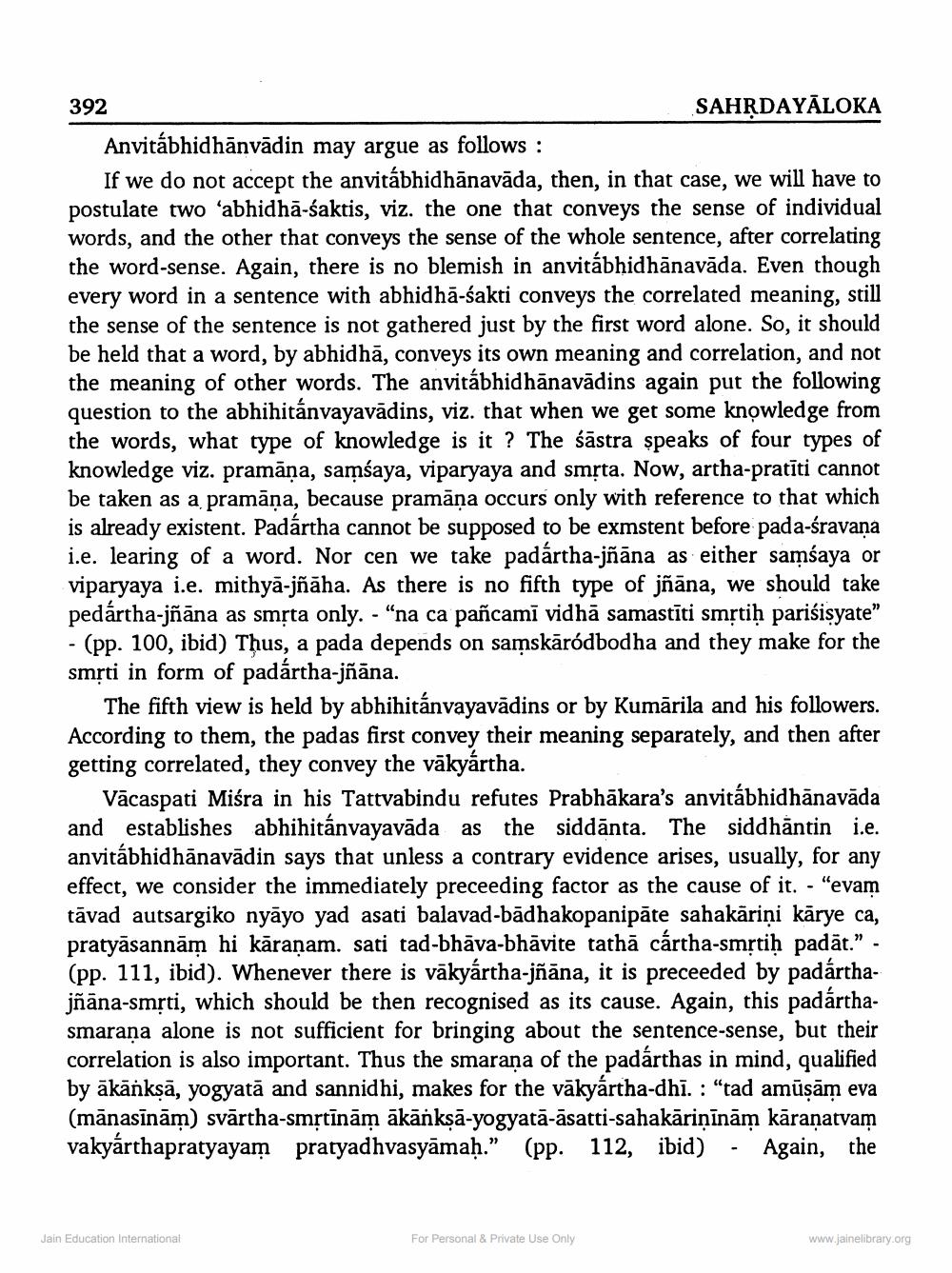________________
392
SAHĶDAYĀLOKA Anvitábhidhānvādin may argue as follows :
If we do not accept the anvitábhidhānavāda, then, in that case, we will have to postulate two abhidhā-saktis, viz. the one that conveys the sense of individual words, and the other that conveys the sense of the whole sentence, after correlating the word-sense. Again, there is no blemish in anvitábhidhānavāda. Even though every word in a sentence with abhidhā-sakti conveys the correlated meaning, still the sense of the sentence is not gathered just by the first word alone. So, it should be held that a word, by abhidhā, conveys its own meaning and correlation, and not the meaning of other words. The anvitábhidhānavādins again put the following question to the abhihitánvayavādins, viz. that when we get some knowledge from the words, what type of knowledge is it? The śāstra speaks of four types of knowledge viz. pramāna, samsaya, viparyaya and smộta. Now, artha-pratīti cannot be taken as a pramāna, because pramāna occurs only with reference to that which is already existent. Padártha cannot be supposed to be exmstent before pada-śravana i.e. learing of a word. Nor cen we take padártha-jñāna as either samsaya or viparyaya i.e. mithyā-jñāha. As there is no fifth type of jñāna, we should take pedártha-jñāna as smrta only. - "na ca pañcamī vidhā samastīti smrtih pariśisyate" - (pp. 100, ibid) Thus, a pada depends on samskāródbodha and they make for the smrti in form of padártha-jñāna.
The fifth view is held by abhihitánvayavādins or by Kumārila and his followers. According to them, the padas first convey their meaning separately, and then after getting correlated, they convey the vākyártha.
Vācaspati Miśra in his Tattvabindu refutes Prabhākara's anvitábhidhānavāda and establishes abhihitánvayavāda as the siddānta. The siddhantin i.e. anvitábhidhānavādin says that unless a contrary evidence arises, usually, for any effect, we consider the immediately preceeding factor as the cause of it. - “evam tāvad autsargiko nyāyo yad asati balavad-bādhakopanipāte sahakāriņi kārye ca, pratyāsannām hi kāranam. sati tad-bhāva-bhävite tathā cártha-smrtih padät." . (pp. 111, ibid). Whenever there is vākyártha-jñāna, it is preceeded by padártha
which should be then recognised as its cause. Again, this padárthasmarana alone is not sufficient for bringing about the sentence-sense, but their correlation is also important. Thus the smarana of the padárthas in mind, qualified by ākānksā, yogyatā and sannidhi, makes for the vākyártha-dhī. : “tad amūṣām eva (mānasīnām) svārtha-smộtīnām ākānksā-yogyatā-āsatti-sahakāriņīnām kāranatyam vakyárthapratyayam pratyadhvasyāmah.” (pp. 112, ibid) - Again, the
Jain Education International
For Personal & Private Use Only
www.jainelibrary.org




